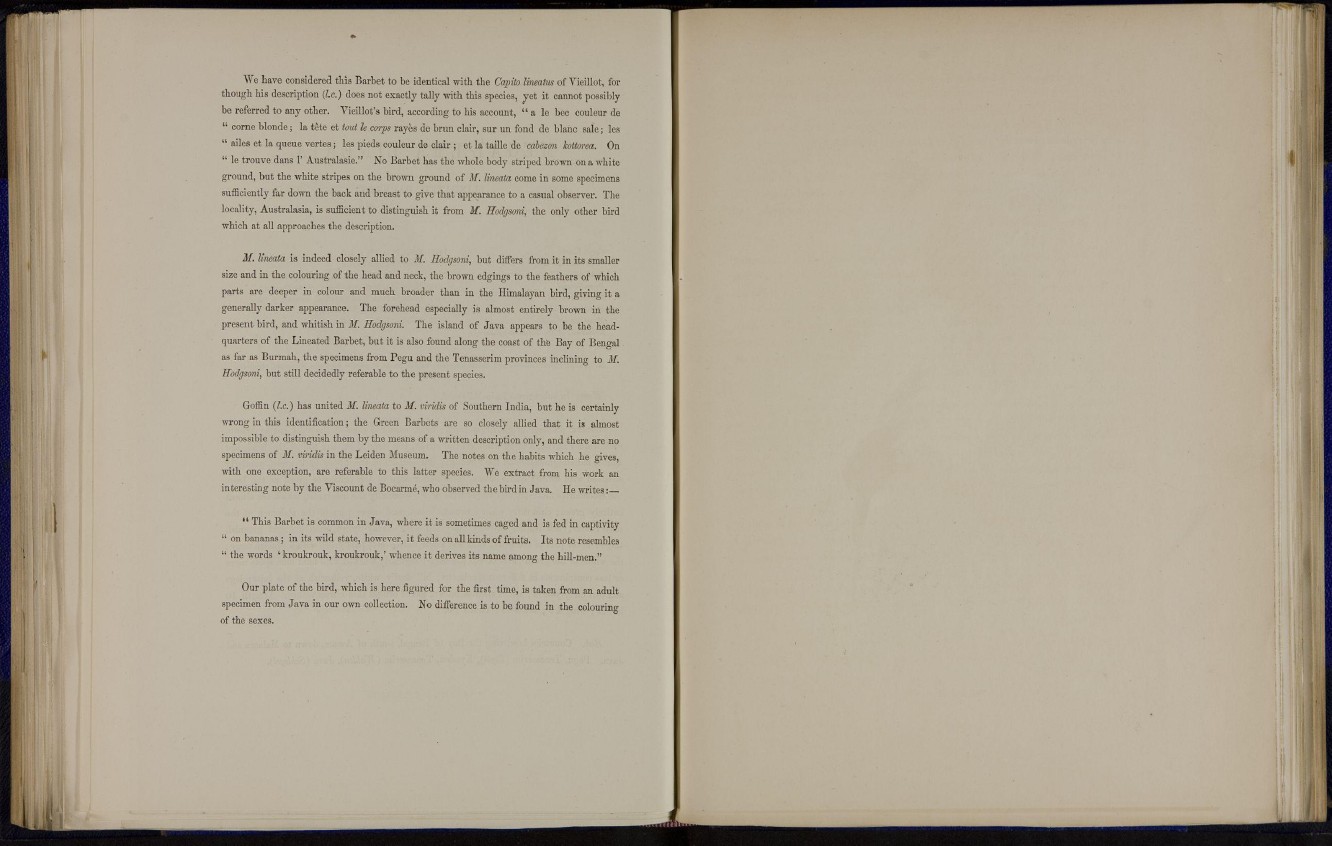
We have considered this Barbet t o be identical with the Capito Jineatus of Vieillot, for
though his description (I.e.) does not exactly tally with this species, yet it cannot possibly
be referred to any other. Yieillot's bird, according to his account, " a le bee couleur de
" come blonde; la tete et tout le corps rayes de brim clair, sur un fond de blanc sale; les
" ailes et la queue v e r t e s ; les pieds couleur de clair ; et la taille de cabezon kottorea. On
" le trouve dans 1' Australasie." No Barbet has t h e whole body striped brown on a white
ground, but the white stripes on the brown ground of it. lineata come in some specimens
sufficiently far down the back and breast t o give that appearance to a casual observer. The
locality, Australasia, is sufficient to distinguish it from M. Hodgsoni, the only other bird
which at all approaches the description.
M. lineata is indeed closely allied to M. Hodgsoni, but differs from it in its smaller
size and in the colouring of the head and neck, the brown edgings t o t h e feathers of which
parts are deeper in colour and much broader than in the Himalayan bird, giving it a
generally darker appearance. The forehead especially is almost entirely brown in the
present bird, and whitish in M. Hodgsoni. The island of Java appears to be the headquarters
of the Lineated Barbet, but it is also found along the coast of the Bay of Bengal
as far as Burmah, t h e specimens from Pegu and the Tenasserim provinces inclining to M.
Hodgsoni, but still decidedly referable t o t h e present species.
Goffin (I.e.) has united M. lineata to M. viridis of Southern India, but he is certainly
wrong in this identification; the Green Barbets are so closely allied that it is almost
impossible to distinguish them by the means of a written description only, and there are no
specimens of M. viridis in the Leiden Museum. The notes on the habits which he gives,
with one exception, are referable to this latter species. We extract from his work an
interesting note by the Viscount de Bocarme, who observed the bird in Java. He writes:—
This Barbet is common in Java, where it is sometimes caged and is fed in captivity
" on bananas; in its wild state, however, it feeds on all kinds of fruits. Its note resembles
" the words 1 kroukrouk, kroukrouk,' whence i t derives its name among the hill-men."
Our plate of the bird, which is here figured for the first time, is taken from an adult
specimen from J a v a in our own collection. No difference is to b e found in the colouring
of the sexes.